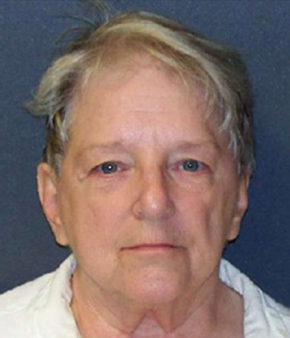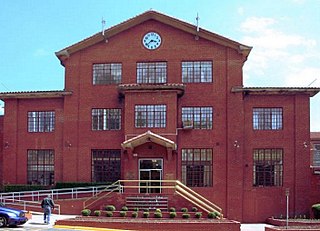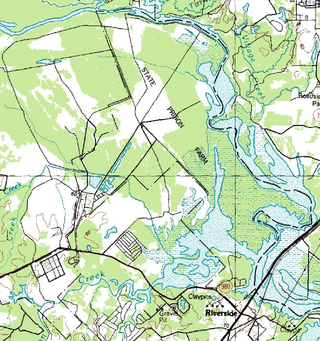Related Research Articles

Criminal justice is the delivery of justice to those who have been accused of committing crimes. The criminal justice system is a series of government agencies and institutions. Goals include the rehabilitation of offenders, preventing other crimes, and moral support for victims. The primary institutions of the criminal justice system are the police, prosecution and defense lawyers, the courts and the prisons system.

The Bow Street Runners were the law enforcement officers of the Bow Street Magistrates' Court in the City of Westminster. They have been called London's first professional police force. The force originally numbered six men and was founded in 1749 by magistrate Henry Fielding, who was also well known as an author. Bow Street Runners was the public's nickname for the officers although the officers did not use the term themselves and considered it derogatory. The group was disbanded in 1839 and its personnel merged with the Metropolitan Police, which had been formed ten years earlier.
A Borstal was a type of youth detention centre in the United Kingdom, several member states of the Commonwealth and the Republic of Ireland. In India, such a detention centre is known as a Borstal school.

Broadmoor Hospital is a high-security psychiatric hospital in Crowthorne, Berkshire, England. It is the oldest of England's three high-security psychiatric hospitals, the other two being Ashworth Hospital near Liverpool and Rampton Secure Hospital in Nottinghamshire. The hospital's catchment area consists of four National Health Service regions: London, Eastern, South East and South West. It is managed by the West London NHS Trust.

Incarceration in the United States is one of the primary means of punishment for crime in the United States. In 2023, over five million people are under supervision by the criminal justice system, with nearly two million people incarcerated in state or federal prisons and local jails. The United States has the largest known prison population in the world. Prison populations grew dramatically beginning in the 1970s, but began a decline around 2009, dropping 25% by year-end 2021.

A probation or parole officer is an official appointed or sworn to investigate, report on, and supervise the conduct of convicted offenders on probation or those released from incarceration to community supervision such as parole. Most probation and parole officers are employed by the government of the jurisdiction in which they operate, although some are employed by private companies that provide contracted services to the government.

Genene Anne Jones is an American serial killer, responsible for the deaths of up to 60 infants and children in her care as a licensed vocational nurse during the 1970s and 1980s. In 1984, Jones was convicted of murder and injury to a child. She had used injections of digoxin, heparin, and later succinylcholine to induce medical crises in her patients, causing numerous deaths. The exact number of victims remains unknown; hospital officials allegedly misplaced and then destroyed records of Jones' activities, to prevent further litigation after Jones' first conviction.

Texas State Penitentiary at Huntsville or Huntsville Unit (HV), nicknamed "Walls Unit", is a Texas state prison located in Huntsville, Texas, United States. The approximately 54.36-acre (22.00 ha) facility, near downtown Huntsville, is operated by the Correctional Institutions Division of the Texas Department of Criminal Justice. The facility, the oldest Texas state prison, opened in 1849.

Deterrence in relation to criminal offending is the idea or theory that the threat of punishment will deter people from committing crime and reduce the probability and/or level of offending in society. It is one of five objectives that punishment is thought to achieve; the other four objectives are denunciation, incapacitation, retribution and rehabilitation.
Maxim Anderson was a British director and producer of documentaries. He worked with the GPO Film Unit from 1936 onwards, and later changed to Crown Film Unit. He directed documentaries such as The Harvest Shall Come (1942) and Four Men in Prison (1950).

Churchill's Island is a 1941 propaganda film chronicling the defence of Britain during the Second World War. The film was directed by Stuart Legg and produced by the National Film Board of Canada (NFB) for the Director of Information, Government of Canada.

The Texas Department of Criminal Justice (TDCJ) is a department of the government of the U.S. state of Texas. The TDCJ is responsible for statewide criminal justice for adult offenders, including managing offenders in state prisons, state jails, and private correctional facilities, funding and certain oversight of community supervision, and supervision of offenders released from prison on parole or mandatory supervision. The TDCJ operates the largest prison system in the United States.

Allan B. Polunsky Unit is a prison in West Livingston, unincorporated Polk County, Texas, United States, located approximately 5 miles (8.0 km) southwest of Livingston along Farm to Market Road 350. The Texas Department of Criminal Justice (TDCJ) operates the facility. The unit houses the State of Texas death row for men, and it has a maximum capacity of 2,900. Livingston Municipal Airport is located on the other side of FM 350. The unit, along the Big Thicket, is 60 miles (97 km) east of Huntsville.

A prison, also known as a jail, gaolpenitentiary, detention center, correction center, correctional facility, or remand center, is a facility where people are confined against their will and denied a variety of freedoms under the authority of the state, generally as punishment for various crimes. Authorities most commonly use prisons within a criminal-justice system: people charged with crimes may be imprisoned until their trial; those who have pled or been found guilty of crimes at trial may be sentenced to a specified period of imprisonment.

O. B. Ellis Unit is a Texas Department of Criminal Justice prison located in unincorporated Walker County, Texas, 12 miles (19 km) north of Huntsville. The unit, with about 11,427 acres (4,624 ha) of space, now houses up to 2,400 male prisoners. Ellis is situated in a wooded area shared with the Estelle Unit, which is located 3 miles (4.8 km) away from Ellis. From 1965 to 1999 it was the location of the State of Texas men's death row.

W. J. "Jim" Estelle Unit also known as the Estelle Supermax Penitentiary, is a prison located on Farm to Market Road 3478 in unincorporated Walker County, Texas, United States, 10 miles (16 km) north of central Huntsville. The prison, with about 5,459 acres (2,209 ha) of space, is operated by the Texas Department of Criminal Justice. The unit, which opened in June 1984, was named after Ward James "Jim" Estelle, a former prison director of Texas.

The Thomas Goree Unit (GR) is a Texas Department of Criminal Justice men's prison, located in Huntsville, Texas, 4 miles (6.4 km) south of downtown Huntsville on Texas State Highway 75 South. The Goree Unit is located within Region I. First opened in 1911, it served as the only women's correctional facility in Texas until 1982, after the women were moved to state prisons in Gatesville. For a period Goree held the state's sole female death row inmate, until her conviction was changed to a non-capital offense. There was more than one death row female at Goree in 1979.
Indigenous Australians are both convicted of crimes and imprisoned at a disproportionately higher rate in Australia, as well as being over-represented as victims of crime. As of September 2019, Aboriginal and Torres Strait Islander prisoners represented 28% of the total adult prisoner population, while accounting for 2% of the general adult population. Various explanations have been given for this over-representation, both historical and more recent. Federal and state governments and Indigenous groups have responded with various analyses, programs and measures.
Sentencing in England and Wales refers to a bench of magistrates or district judge in a magistrate's court or a judge in the Crown Court passing sentence on a person found guilty of a criminal offence. In deciding the sentence, the court will take into account a number of factors: the type of offence and how serious it is, the timing of any plea of guilty, the defendant's character and antecedents, including their criminal record and the defendant's personal circumstances such as their financial circumstances in the case of a fine being imposed.
People with mental illnesses are overrepresented in jail and prison populations in the United States relative to the general population. There are three times as many seriously mentally ill people in jails and prisons than in hospitals in the United States, and mentally ill people experience solitary confinement at disproportionate rates compared to the general prison population. There are a number of reasons for this overrepresentation, including the deinstitutionalization of mentally ill individuals in the mid-twentieth century, inadequate community treatment resources, and the criminalization of mental illness itself. There is a consensus that mentally ill offenders have comparable rates of recidivism to non-mentally ill offenders.
References
- ↑ Fox 1952, p. 84.
- ↑ Birch 1950.
- 1 2 Ellis 2000, p. 258.
- ↑ Ellis 1989, p. 154.
- ↑ Ellis & McLane 2005, p. 148.
- ↑ COI Collection Vol 1.
- ↑ Enticknap 1999, p. 244.